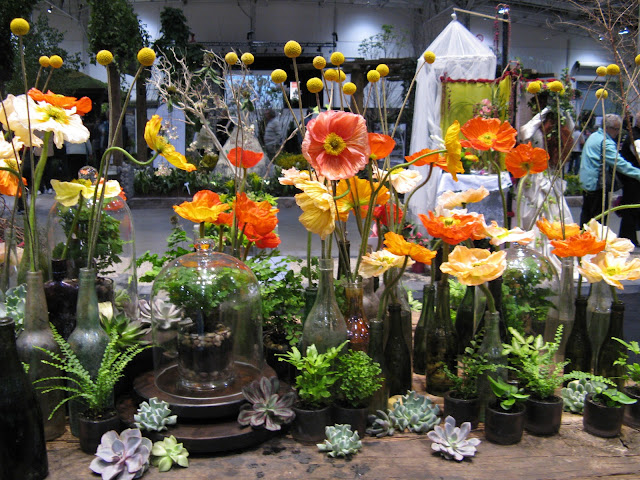What? I can't believe I just said that. Why ever not?
Firstly, after our first visit this year at the end of April, I (in particular) was very disheartened at the amount of damage the deer had done over the winter. In fact, many of the plants that had survived the first winter, had not survived the second. There's a great deal of emotional impact in seeing our very carefully selected, planted and nurtured plants decimated by a few seconds of indiscriminate chomping. We spent much in the way of time on our new "babies", not to mention the expense of purchasing them. Obviously, not being present for extend periods doesn't help. Hence we have decided that it is probably more circumspect to have a suspension on new garden purchases for this year, though we will probably weed and cultivate.
Secondly, because we are extremely busy this year with the building of our new home! It now takes up 90% of our non-work related energy and has done so throughout the summer. Thank goodness we are busy, or gardening withdrawal symptoms might threaten my sanity.
Life without gardening is still a barren place, notwithstanding the enormous drain on energy that the learning curve of house construction has been. My indoor garden is doing well, despite the strange infestations that occur, and I've managed to keep new acquisitions to a minimum at the same time as actually discarding some plants that are past their best. Still, it's not the same as being outside and getting my hands in the soil.
So ... how have we managed to stay sane? By watching Gardening shows online. To be more specific, we've discovered that we can watch some pretty wonderful gardening shows that have been uploaded to the video sharing website, Youtube. I have no idea how some people have the time, nor the data capacity to upload the hours of video that they do, but I must confess, I'm grateful to them.
We started off with Around the World in 80 Gardens with Monty Don, a well-known gardening person in the UK. This series is in 10 parts. Gardening personality - Monty Don - visits 80 gardens in different parts of the world. Part travelogue, part adventure, it is a deeply personal journey that Monty Don makes, which challenges his very conception of what a garden is. My favorite episode was about India. I was very surprised, as I thought it would be about China and Japan, given my predilection for Japanese gardens, but I confess I found them a bit sterile and undelightful.
Here's a link to watch a preview of Around the World in 80 Gardens. Perhaps it will inspire you to watch more.
So, where to next? We really liked Monty Don and a quick investigation revealed that he was quite a TV personality in the UK. So we settled in to some more armchair travelling, this time to Italy. Monty Don's Italian Gardens chronicles the history of Italian Gardens from the Renaissance through to the 20th century, and also traverses Italy geographically, visiting Rome, Florence, Naples and the North ... the Venato and Lake Como. I've watched some of the parts more than once. They are packed with information, not only about the gardens, but about the history behind their making, and although I'm not historical inclined, they are a fascinating chronicle.
Monty Don has made quite a few series for British Television, and we have immersed ourselves in his visit to France; his kitchen garden series Fork to Table, where he grows vegetables and then cooks and eats them; and then to bring us right up to date, the venerable iconic British gardening show Gardeners' World.
There are other wonderful gardening shows which have distracted us from the real thing. Here are a few of my favorites.
- Peter Thoday and Harry Dodson recreated the garden at Chilton in the superb Victorian Kitchen Garden (which I remember watching in the '80's when it was first broadcast).
- Carol Klien (another host of Gardeners' World) shows us her garden at Glebe Cottage in Life in Cottage Garden.
- Alan Titchmarsh chronicles the history of some of Britain's most well know gardens from the 17th to the 20th Century in Garden Secrets.
Is this vicarious form of gardening a satisfactory substitute? Well, I've been amazed at how "serious" gardening is as a hobby in Great Britain, and how enthusiastic the gardeners are. I've also learned some very valuable lessons from the history books. It's certainly not a substitute for the real thing, but I must admit to have enjoyed the distraction.















































